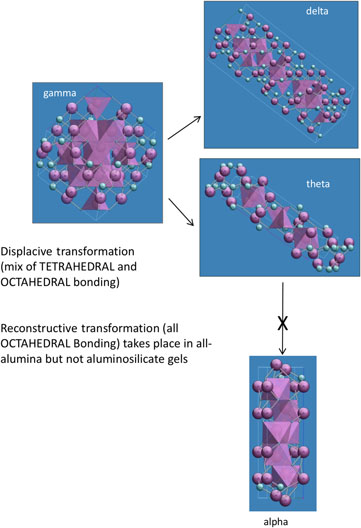Crossref Citations
This article has been cited by the following publications. This list is generated based on data provided by
Crossref.
Ren, H.Y.
Wu, D.F.
Wu, W.J.
Li, J.N.
and
Lin, L.J.
2019.
Experimental and numerical research on high‐temperature thermal insulation performance of lightweight porous ceramic/nanomaterial composite structure.
Materialwissenschaft und Werkstofftechnik,
Vol. 50,
Issue. 12,
p.
1525.
Gao, Min
Liu, Benxue
Zhao, Ping
Yi, Xibin
Shen, Xiaodong
and
Xu, Yue
2019.
Mechanical strengths and thermal properties of titania-doped alumina aerogels and the application as high-temperature thermal insulator.
Journal of Sol-Gel Science and Technology,
Vol. 91,
Issue. 3,
p.
514.
Yu, Yuxi
Xu, Jian
Wang, Guanchun
Zhang, Ruiqian
and
Peng, Xiaoming
2020.
Preparation of paraffin/SiO2 aerogel stable-stabilized phase change composites for high-humidity environment.
Journal of Materials Science,
Vol. 55,
Issue. 4,
p.
1511.
Hurwitz, Frances I.
Rogers, Richard B.
Guo, Haiquan
Garg, Anita
Olson, Nathaniel S.
Phan, David
and
Cashman, Jessica L.
2020.
Phase development and pore stability of yttria‐ and ytterbia‐stabilized zirconia aerogels.
Journal of the American Ceramic Society,
Vol. 103,
Issue. 12,
p.
6700.
Peng, Fei
Jiang, Yonggang
Feng, Junzong
Li, Liangjun
Cai, Huafei
and
Feng, Jian
2020.
A facile method to fabricate monolithic alumina–silica aerogels with high surface areas and good mechanical properties.
Journal of the European Ceramic Society,
Vol. 40,
Issue. 6,
p.
2480.
Wang, Xiaodong
Tian, Yulin
Yu, Chenglong
Liu, Lin
Zhang, Ze
Wu, Yu
and
Shen, Jun
2022.
Organic/inorganic double-precursor cross-linked alumina aerogel with high specific surface area and high-temperature resistance.
Ceramics International,
Vol. 48,
Issue. 12,
p.
17261.
Peng, Fei
Jiang, Yonggang
Feng, Jian
Liu, Fengqi
Feng, Junzong
and
Li, Liangjun
2022.
Novel silica-modified boehmite aerogels and fiber-reinforced insulation composites with ultra-high thermal stability and low thermal conductivity.
Journal of the European Ceramic Society,
Vol. 42,
Issue. 14,
p.
6684.
Steiner, Stephen A.
Griffin, Justin S.
Nelson, Ryan T.
Hurwitz, Frances I.
and
Worsley, Marcus A.
2023.
Springer Handbook of Aerogels.
p.
133.
Rafya, Meriem
Misrar, Wafa
Saâdi, Latifa
Mansori, Mohammed
Waqif, Mohamed
Hafidi, Abdellatif
Zehhar, Naima
and
Benkhalti, Fatiha
2023.
Ceramic membrane support based on kaolin and solid waste from hydrodistillation of Rosmarinus officinalis L.
Materials Chemistry and Physics,
Vol. 295,
Issue. ,
p.
127030.
Hurwitz, Frances I.
Guo, Haiquan
Rogers, Richard B.
Olson, Nathaniel
and
Garg, Anita
2023.
Springer Handbook of Aerogels.
p.
437.
Olson, Nathaniel S.
Meyer, Jordan A.
Hurwitz, Frances I.
Guo, Haiquan
Stokes, Jamesa L.
and
Krogstad, Jessica A.
2024.
Role of synthetic parameters on structure and thermal stability in yttria-stabilized zirconia aerogels.
Journal of Sol-Gel Science and Technology,
Vol. 110,
Issue. 3,
p.
607.
Huang, Ruiming
Jiang, Yonggang
Zhang, Lujia
Chen, Qu
Feng, Junzong
Li, Liangjun
Hu, Yijie
and
Feng, Jian
2025.
Elucidating phase transformation and nanostructure evolution behavior of Al2O3-SiO2 aerogel under rapid heating from RT to 1300 °C via in situ heating TEM.
Journal of the European Ceramic Society,
Vol. 45,
Issue. 16,
p.
117656.
Kim, Ga-Yeong
Lee, Byeonggwan
Choi, Jung-Hoon
Lee, Jong Kwang
Kang, Hyun Woo
Pyo, Jae-Young
Yang, Jae Hwan
Park, Hwan-Seo
and
Lee, Ki Rak
2025.
Fabrication and evaluation of monolithic pollucite waste form for immobilization of radioactive cesium.
Ceramics International,
Vol. 51,
Issue. 21,
p.
34248.


